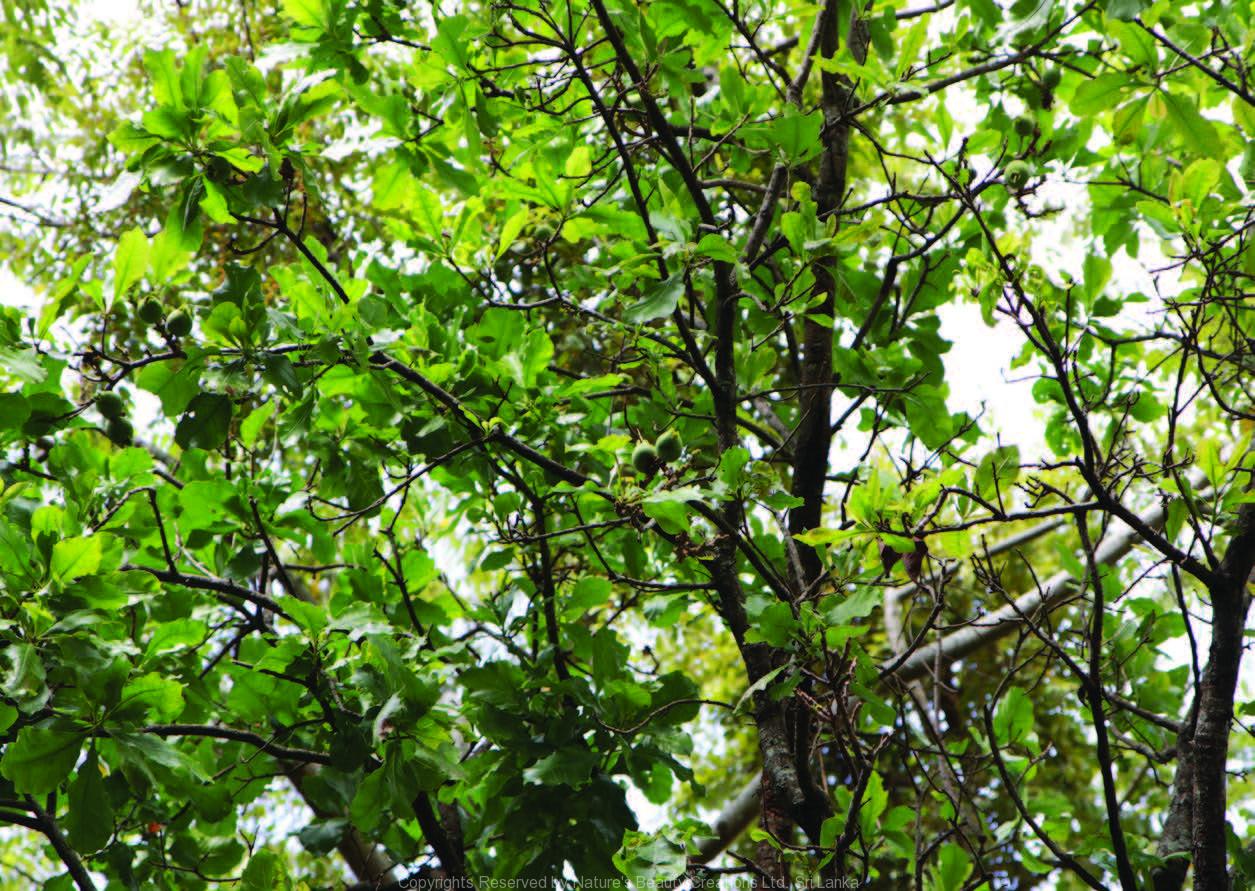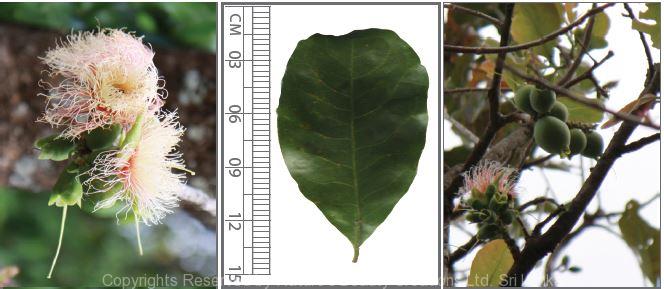

Traditional Knowledge
Useful plant parts :
Flower and flower bud
Uses in traditional medicine :
- Dried flowers and flower buds, mixed with bee honey are prescribed for coughs and colds in children
Scientific Research
Chemical constituents:
Triterpenoid saponin: arborenin, desacylescin III, triterpenoid lactone: careyagenolide, terpenes: maslinic acid and 2α-hydroxy ursolic acid from leaves; alkaloid: piperine from bark
Bioactivity :
Arborenin: antileishmanial; methanol extract of stem bark: antimicrobial, antioxidative, hepatoprotective, antidiarrhoeal, antitumour, central nervous system depressant; methanol and aqueous extract of plant: α-glucosidase inhibitor, piperine: analgaesic
Clinical:
Note :
Young fruits are used as a vegetable
References : Ahmed, M. et al., (2002), Analgesic principle from the bark of Careya arborea, Pharmazie, 57(10), 698-701. Das, M. C. and Mahato, S. B., (1982), Triterpenoid sapogenols from the leaves of Careya arborea: structure of careyagenolide, Phytochemistry, 21(8), 2069-2073. Gupta, P. C. et al., (2012), Pharmacognostic studies of the leaves and stem of Careya arborea Roxb, Asian Pac J Trop Biomed, 2(5), 404-8. Kumar, R. S. et al., (2005), Hepatoprotective and in vitro Antioxidant effects of Careya arborea against Carbon tetrachloride Induced Liver Damage in Rats, International Journal of Molecular Medicine and Advanced Science, 1(4), 418-424. Kumar, R. S. et al., (2006), Antimicrobial and Antioxidant Activities of Careya arborea Roxb. Stem Bark, Iranian journal of pharmacology & therapeutics, 5, 35-41. Kumar, R. S. et al., (2008), CNS activity of the methanol extracts of Careya arborea in experimental animal model, Bangladesh Journal of Pharmacology, 3, 36-43. Mai, T. T. et al., (2007), Alpha-glucosidase inhibitory and antioxidant activities of Vietnamese edible plants and their relationships with polyphenol contents, J Nutr Sci Vitaminol (Tokyo), 53(3), 267-76. Mandal, D. et al., (2006), A triterpenoid saponin possessing antileish- manial activity from the leaves of Careya arborea, Phytochemistry, 67, 183-190. Natesan, S. et al., (2007), Antitumor Activity and Antioxidant Status of the Methanol Extract of Careya arborea Bark Against Dalton’s Lymphoma Ascites-Induced Ascitic and Solid Tumor in Mice, Journal of Pharmacological Sciences, 103(1), 12-23. Natesan, S. et al., (2007), Antitumor ativity and antioxidant status of the methanol extract of Careya arborea bark against dalton’s lymphoma ascites- induced ascitic and solid tumor in mice, Journal of pharmaco- logical sciences, 103, 12-23 Rahman, M. T., (2003), Antidiarrhoeal activity of the bark extract of Careya arborea Roxb., Fitoterapia, 74, 116-118. Senthilkumar, N. et al., (2008), Antioxidant and hepatoprotective activity of the methanol extract of Careya arborea bark in Ehrlich ascites carcinoma-bearing mice, J Nat Med, 62(3), 336-9.
Copyrights Reserved By
Natures Beauty Creations




